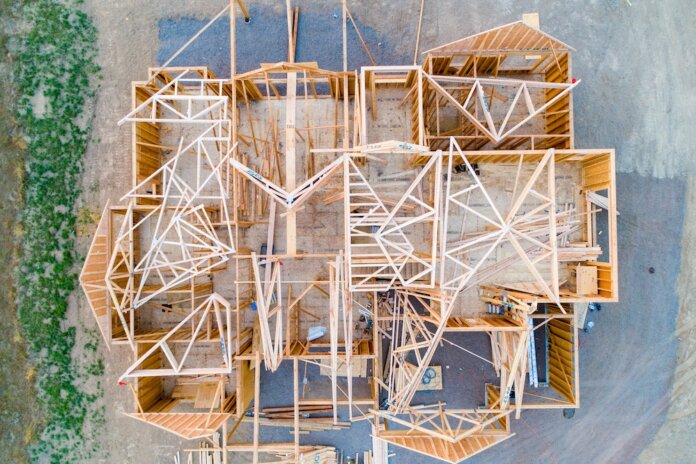Housing starts increased slightly in April, bringing a glimmer of hope for the ongoing inventory problem, but remained down significantly from a year ago as builders faced the usual headwinds including lack of skilled labor and supply chain issues.
According to estimates from the U.S. Census Bureau and the U.S. Department of Housing and Urban Development, housing starts were at a seasonally adjusted annual rate of 1.401 million, an increase of 2.2% compared with March but down 22.3% compared with April 2022.
In a positive sign, starts of single‐family homes were at an annual rate of 846,000, an increase of 1.6% compared with March.
Starts of multifamily properties (five units or more per building) were at a rate of 542,000, an increase of 5.2% compared with the previous month.
Despite these gains, production is nowhere near year-ago levels. Regionally, and year over year, combined single-family and multifamily starts were down 8.9% in the Northeast, 29.5% in the Midwest, 15.9% in the South and 29.7% in the West.
Building permits were down overall – but permits for standalone single-family homes were up compared with March.
Overall, permits were at a seasonally adjusted annual rate of 1.416 million, down 1.5% compared with March and down 21.1% compared with April 2022.
Permits for single-family homes were at a rate of 855,000, an increase of 3.1% compared with March.
Permits for multifamily homes were at a rate of 502,000 in April, a decrease of 9.7% compared with the month prior.
Housing completions were at a seasonally adjusted annual rate of 1.375 million, down 10.4% compared with March but up 1.0% compared with April 2022.
“Single-family starts are showing gradual improvement from the beginning of the year, and this is reflected in our builder sentiment surveys, which are up for five consecutive months,” says Alicia Huey, chairman of the National Association of Home Builders (NAHB), in a statement. “Due to a lack of inventory for resales, we expect to see further improvement for single-family production in the months ahead even as builders continue to grapple with supply-chain and labor shortages.”
“As the Federal Reserve nears the end of its tightening of financial conditions, we expect mortgage rates to moderate in the months ahead, and this will lead to a gradual improvement in single-family production,” adds Robert Dietz, chief economist for NAHB. “Multifamily permits are down 23 percent year-over-year, and this indicates a slowdown for apartment construction is underway due to a tighter lending environment.”
“Builders want to ensure that if they build it, someone will buy it,” says Odeta Kushi, deputy chief economist for First American, in a statement. “Despite ongoing affordability constraints, builders are finding that there is demand on the sidelines. As long as existing-home supply remains constrained, new-home construction can fill the void.”
“In April, there were a total 1.675 million units under construction,” Kushi says. “The number of single-family homes under construction has retreated from the 2022 peak, while multi-family hit another record high this month. More supply should put some downward pressure on prices.”
“While estimates about the size of the housing shortage vary, there is general agreement that there is a significant housing shortage,” she adds. “Estimates of the nation-wide housing shortage vary, but tend to range from between 3.5 million to 5.5 million housing units. This implies that even if all units under construction came to market tomorrow, we’d still be under-built by millions of units. As such, new supply of housing is more likely to ease than erase the national housing shortage, although this will vary by location.”
Photo: Avel Chuklanov














